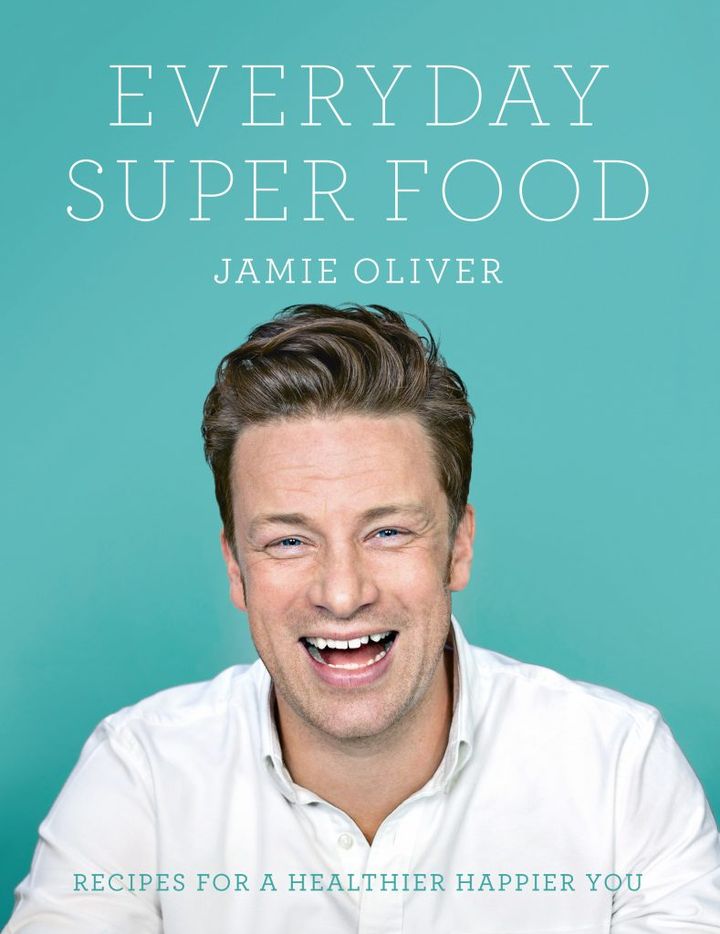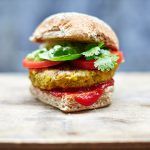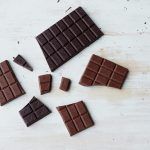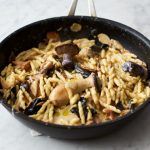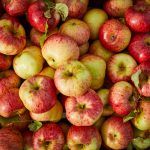A lot of mistakes in unhealthy diets happen in the shopping basket. Years of research proves that most of us buy the same thing, often the wrong thing, with only tiny variants, week in, week out.
For a lot of people it’s a mixture of being trapped on autopilot and feeling a bit lost (and with the makers of bad-quality processed food often on the low-fat, low-sugar diet bandwagon, messages are confusing). Not quite knowing how to make a positive change in our diet, mixed up with being busy, juggling family and work, being over-subservient to kids’ likes and dislikes and wanting to please everyone are all contributing factors. The whole shopping experience is deeply psychological and, to make things worse, the kind of hypnotism and positioning of those highly processed, and often discounted, junk foods makes embracing good fresh foods and ingredients a real challenge.
There are a few things that can be done to profoundly change what gets put into the basket. Flexi-planning a weekly menu is probably the best way to go and can be really fun – shop to plan for half the week, then build in meals that are adaptable and can be turned into other things for the remaining days, just in case plans change at the last minute. This allows for focused shopping. Sitting down with a stack of cookbooks or magazines to pick out some meals for the week ahead is a really nice thing to do, and will most definitely bolster your repertoire, as well as your creativity.
Secondly, and obviously, because of geography we all have varying food options on our doorstep. Having said that, most of us shop at supermarkets – they’re super-convenient and allow us to be flexible and economical with our time, but there are often distractions that can lure us off track, encouraging us to spend more money.
I still religiously use my local butcher, fishmonger and veg and fruit market every week, too – shopping around helps you get to know your area and build up local relationships, but also allows you to suss out the best-quality ingredients available, at the best prices, and in a far more strategic way. And if you’re lucky enough to have a nearby farmer’s market, embrace it, just have a bit of a plan before you go – shopping seasonally will definitely save you money. I also grow some stuff, so this, plus a combination of shopping around, almost certainly helps in making healthier choices. Interestingly, if you remove the actual shopping experience and shop online, it can help bring a little more focus, so this might be worth trying, too, if you want a new tack. Home-delivery boxes are a great way of getting more fresh, local, healthy food through your door as well, and they’ll often surprise you by including something different.
TIPS FOR A HEALTHIER SHOPPING BASKET
VEG & FRUIT
- Just buy more veg and fruit, more salad, and try something new every week – eat the rainbow
- Stock up on frozen veg – they’re great value, available all year, and are nutritious because they’ve been frozen at their peak – you can just grab a handful of what you need, when you need it
- Get lots of herbs and spices in your life – it’s a healthy, delicious way to add flavour, can help lower your salt intake, and herbs are easy to grow too
CARBOHYDRATES
- It’s easy to swap regular rice, flours, pasta and noodles for wholewheat and wholemeal varieties
- Exchange regular bread for wholemeal varieties, or even make your own
PROTEIN
- When it comes to meat focus on quality not quantity, and trade up on the welfare front whenever you can
- Be aware of the fish you choose and make sure to look out for their sustainability certificates (look for MSC, Friend of the Sea certified or RSPCA freedom food logos)
- Embrace the wonder of protein-rich eggs, choosing free-range or organic whenever you can
- Get yourself a range of nuts and seeds and keep them in well-sealed containers ready for adding a delicious crunch and protein boost to your meals
- Remember, beans, pulses and tofu are all good sources of protein as well
FAT
- Try and choose unsaturated fats (the healthier fats) whenever you can. These are found in oils, nuts, seeds and avocados. Fry in olive oil rather than butter
DAIRY
- Don’t buy sweetened yoghurt, go for really nice, organic natural or Greek yoghurts
- Trade up to organic when it comes to milk, yoghurt and butter too
- Select lower fat dairy products like semi-skimmed milk and natural yoghurt rather than heavier creams as these are high in saturated fats
SUGARS
- Limit free sugar intake from table sugar, honey, syrups, agave nectar etc. and instead add sweetness with whole fruits, dried fruit or a little fruit juice
- Don’t buy sugary drinks, just big up jugs of icy cold water with a little squeeze of something – check out the easy flavoured water ideas
BREAKFAST
- Most cereals are full of sugar, but porridge oats are a nutritional wonder, so embrace those and make your own mixes. Making your own is also a super-easy way to get nuts, seeds and dried fruit into your diet for added benefit
DON’T FORGET
- Resist buy-one-get-one-free and similar schemes on the stuff you want to limit in your diet – it’s only a bargain if you need it!
Everyday Super Food by Jamie Oliver is published by Penguin Random House ⓒ Jamie Oliver Enterprises Limited (2015 Everyday Super Food) Photographer: Jamie Oliver
For more super food info and inspiration check out our guide to super foods, here.
